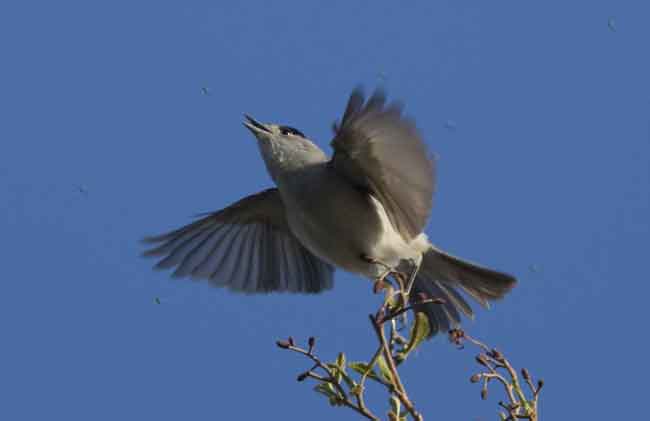Human Feeding Creates New Population of Birds

By feeding birds, you could alter their evolutionary future, with changes visible in the very near term, scientists now conclude.
Due to winter bird-feeding, what was once a single population of birds has, in fewer than 30 generations, been split into two groups that do not interbreed, despite the fact that they continue to breed side by side in the very same forests.
"Our study documents the profound impact of human activities on the evolutionary trajectories of species," said researcher Martin Schaefer, an evolutionary biologist at the University of Freiburg in Germany. "It shows that we are influencing the fate not only of rare and endangered species, but also of the common ones that surround our daily lives."
Wings of change
Over the course of three-and-a-half years, the scientists followed birds known as blackcaps (Sylvia atricapilla) in Central Europe after humans began offering food to them. A recent divide has sprung up, with two groups following distinct migration routes in the winter — one southwest in Spain, the other northwest in the United Kingdom.
"The new northwest migratory route is shorter, and those birds feed on food provided by humans instead of fruits as the birds that migrate southwest do," Schaefer said. "As a consequence, birds migrating northwest have rounder wings, which provide better maneuverability but make them less suited for long-distance migration." They also have longer, narrower bills that are less equipped for eating large fruits like olives during the winter.
This discovery, detailed online Dec. 3 in the journal Current Biology, speaks to a long-standing debate in evolution about whether geographic separation is necessary for new species to develop. By now, the level of reproductive isolation between these populations, which live together for part of the year, is now stronger than that of other blackcaps that are always separated from one another by distances of 500 miles (800 km) or more.
Sign up for the Live Science daily newsletter now
Get the world’s most fascinating discoveries delivered straight to your inbox.
"This is a nice example of the speed of evolution," Schaefer said. "It is something that we can see with our own eyes if we only look closely enough. It doesn't have to take millions of years."
If such isolation and differentiation continues, they can ultimately become separate species.
"The initial steps in speciation — that is, the evolution of reproductive isolation, have rarely been studied," Schaefer said. "This is because speciation is necessarily a historic process, and it is extremely difficult to analyze the selective pressures that lead to speciation in hindsight. Here, we can witness those initial steps."
Other species affected
Schaefer doubts these groups of birds will become different species, because the habits of humans will tend to change over time. Still, he expects humanity will continue to influence the evolution of common species.
"For example, introducing honeybees for securing pollination in crop species has the potential to influence plant-pollinator interactions," Schaefer said. "Plants might adapt to the relative lower importance of native pollinators and change to a more generalistic floral design that could be more efficiently exploited by honeybees."
When it comes to the evolutionary potential of species to adapt to modern impacts on the environment, such as ones caused by climate change, "We know that many of the species are likely unable to adapt quickly to such changes," Schaefer said. "However, I think that the blackcap provides a good example that some species are able to adapt quickly to contemporary ecological changes. This, I believe, is an important and positive result in the current debate, although I need to caution that we cannot extrapolate it easily to other species."
- Great Mysteries: What Drives Evolution?
- Gallery: Birds of Prey
- Gallery: Rare and Exotic Birds











